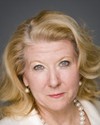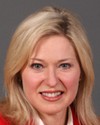Unfortunately, I cannot answer all of your questions, and there were many of them.
We have been in the security business for a long time in Transport Canada, but more so after the Air India bombing. For many, many years, the approach internationally has been to treat everybody the same and to get everybody through the same screening process. But because our equipment is sophisticated and our processes are complex, and because terrorists are still interested in aviation and still trying to be extremely creative in finding gaps in the system, we think we have to better focus the efforts on people who might represent a higher risk.
The difficulty is how to choose the people who would then be subject to more rigorous screening. You can do that by doing behaviour analysis or, like some other countries would say, by characterization of passengers. But you have to do this in such a manner—and it's the same in every country we're discussing—that it will not ever be seen as profiling.
For instance, in Israel, they do passenger behaviour analysis, and Israel has to be careful, politically speaking, themselves. They have over two million people of Arab origin within Israel and they could not be perceived to screen only Arabs and not to screen Jews. So if we ever start such a program in Canada, it has to be based strictly on behaviour.
But there are a number of things that can be done to determine if somebody should go through additional screening. The way it's done normally is just by looking at people and their behaviour, but also by asking a few questions of people, by asking them where they're going and what are they doing. Also, document analysis can tell a long story on how to do that.
A few years ago in the United States, the Transportation Security Administration started a pilot project at Boston's Logan airport. That project was successful, so they decided to train a large number of behaviour detection officers. I think they have 600 to 900 now in place--let's leave it in that range--wandering around the screening point to see who should be selected for additional screening. The principle is that everybody is going to go through the first line of screening, but those behaviour detection officers would help detect those people in need of a secondary search.
Today in most countries the secondary search is strictly random. In Ottawa, for instance, you walk on the carpet, and if the arrow is to the left, you've been selected for a secondary search. But we think there are more intelligent ways to do that, and that's through behaviour detection analysis. That's why the government has decided to invest in the design of the program and the design of a training program, but the government has not decided yet to fund the establishment of such a program.




